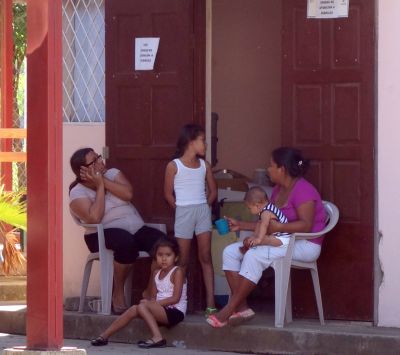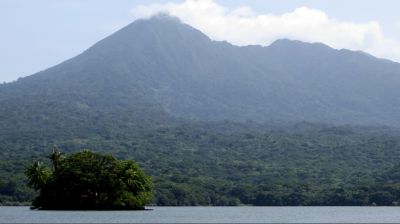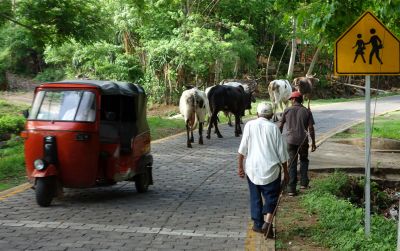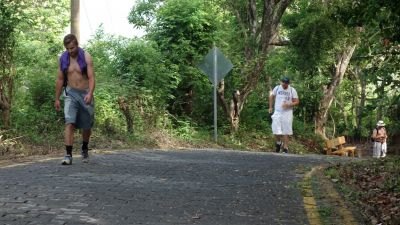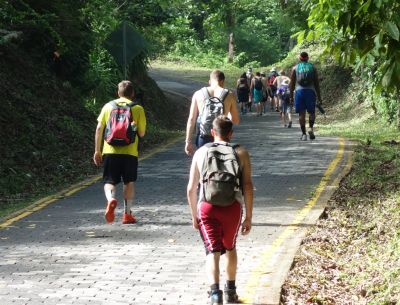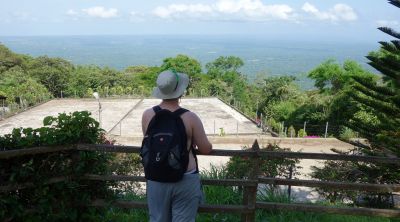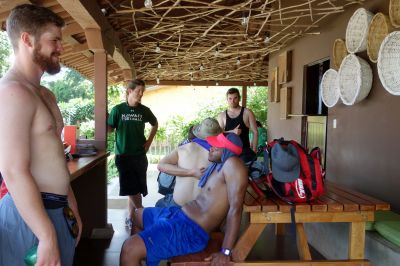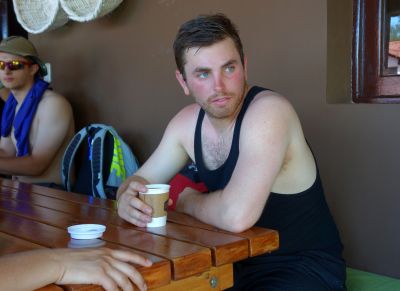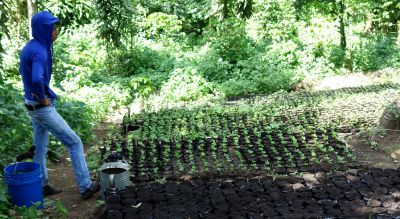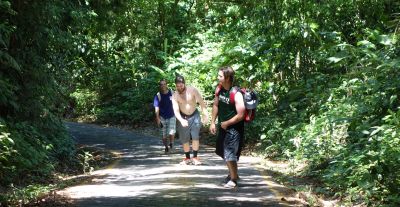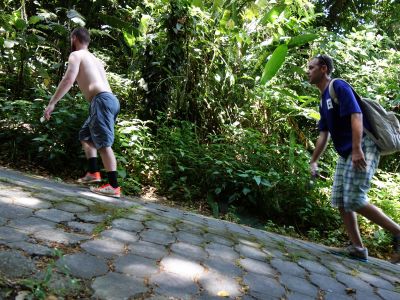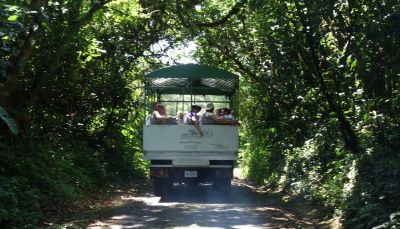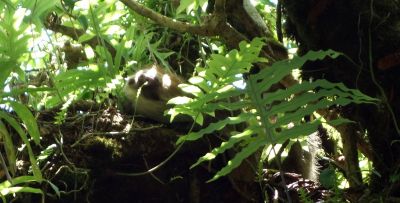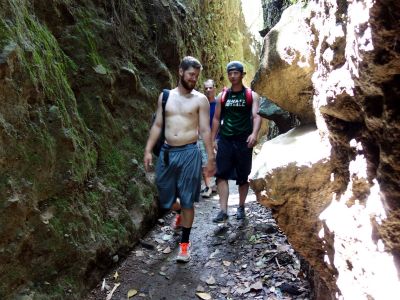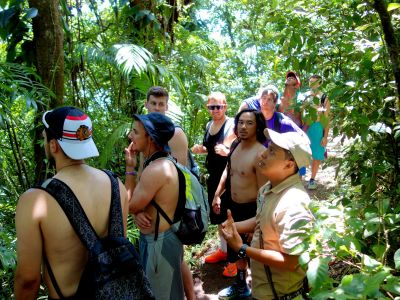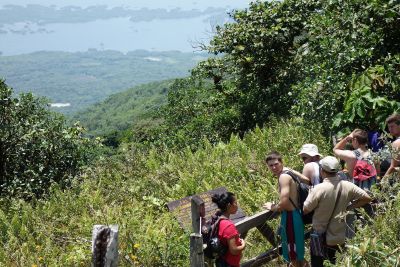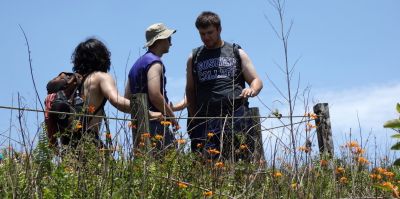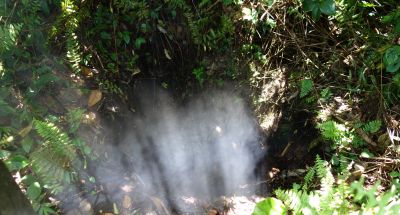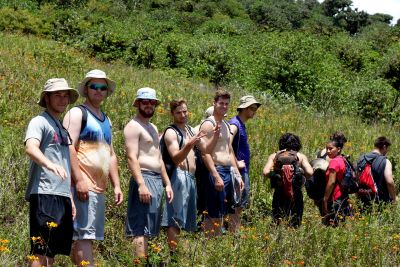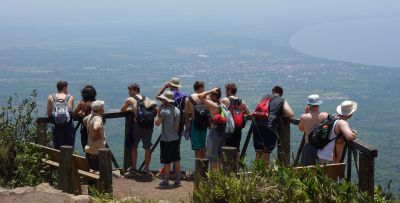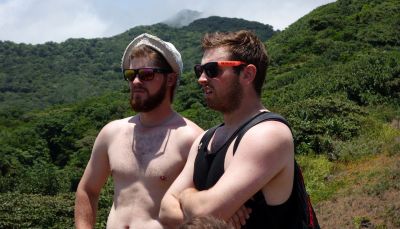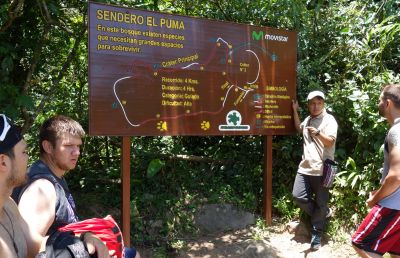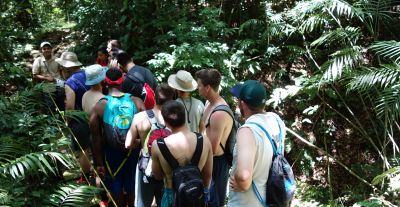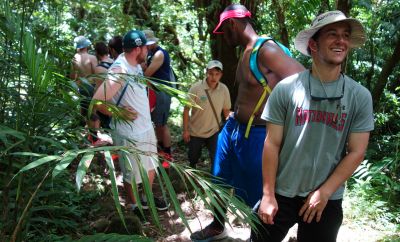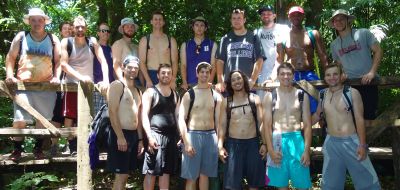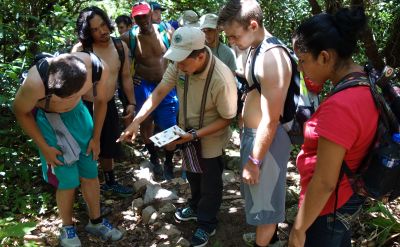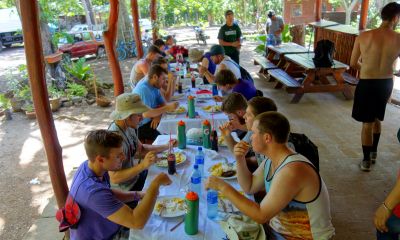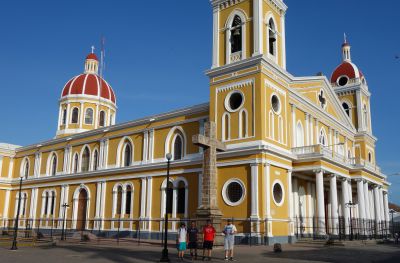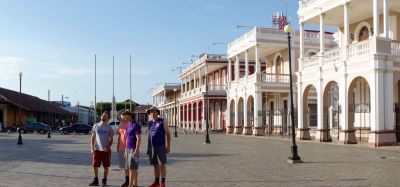May 24, Tuesday
The students took a field trip to the Mombacho Volcano National Park, home to a cloud forest ecosystem. Unlike the Masaya Volcano, this volcano is extinct and much taller, rising to heights above 3,500 feet that are frequently bathed in clouds. Compared to the flat, low elevation plains at the foot of the volcano, which have high temperatures always in the 80s or 90s and no precipitation during the 6-month dry season from December to May, the top of Mombacho is cooler and wetter all year. This gives rise to dramatically different plant growth on top, including many epiphytes, plants that live on tree branches and have no roots in the ground. Because the top is a ‘climate island’, the flora and fauna in the cloud forest support many species that are endemic, meaning they are found nowhere else in the world except in this location.
The park offers vehicle transportation to the top, but visitors can also walk. Everyone in the group walked to a coffee farm that is halfway to the top, and then half the group took a truck the rest of the way and half walked. The climb is strenuous. The change in altitude from the park entrance to the top is 2,400 feet, climbed via a 3.4-mile road, for an average grade of 13%. Although strenuous, it is intriguing to experience the gradual transition for the lower, hot and dry ecosystem to the higher, cool and moist one.
The park that we saw was made possible with a grant from the U.S. Agency for International Development 22 years ago. Before that there were no visitor trails, park guides, or transportation options to the top, and the unprotected cloud forest was being cut down to make way for communication towers.
After Mombacho (and a wild truck ride down the volcano) we visited the nearby city of Granada. It was founded in 1524, making it the oldest continually inhabited city in all the Americas. Although repeatedly burned down in its first 330 years (mostly by English pirates, and the last time in the 1800s by a U.S. mercenary named William Walker), the city today has extensively restored many colonial-era buildings and become a popular tourist destination.
[Several days ago another Nicaraguan newspaper ran a story and picture about the group’s visit to Nicaragua.]
